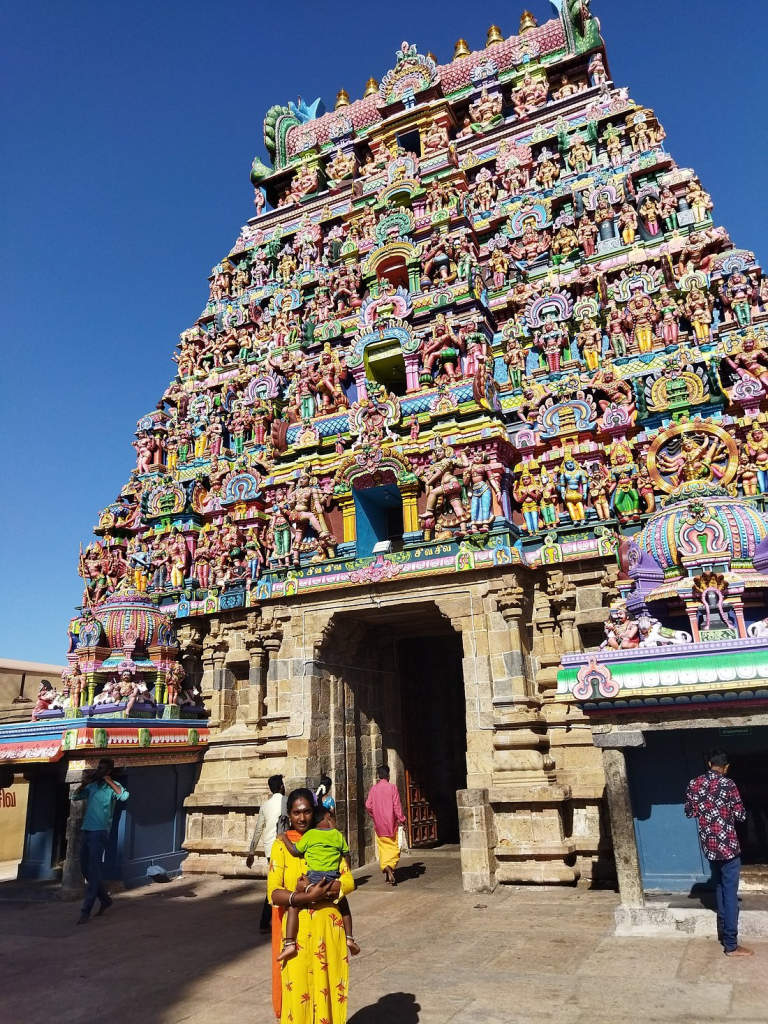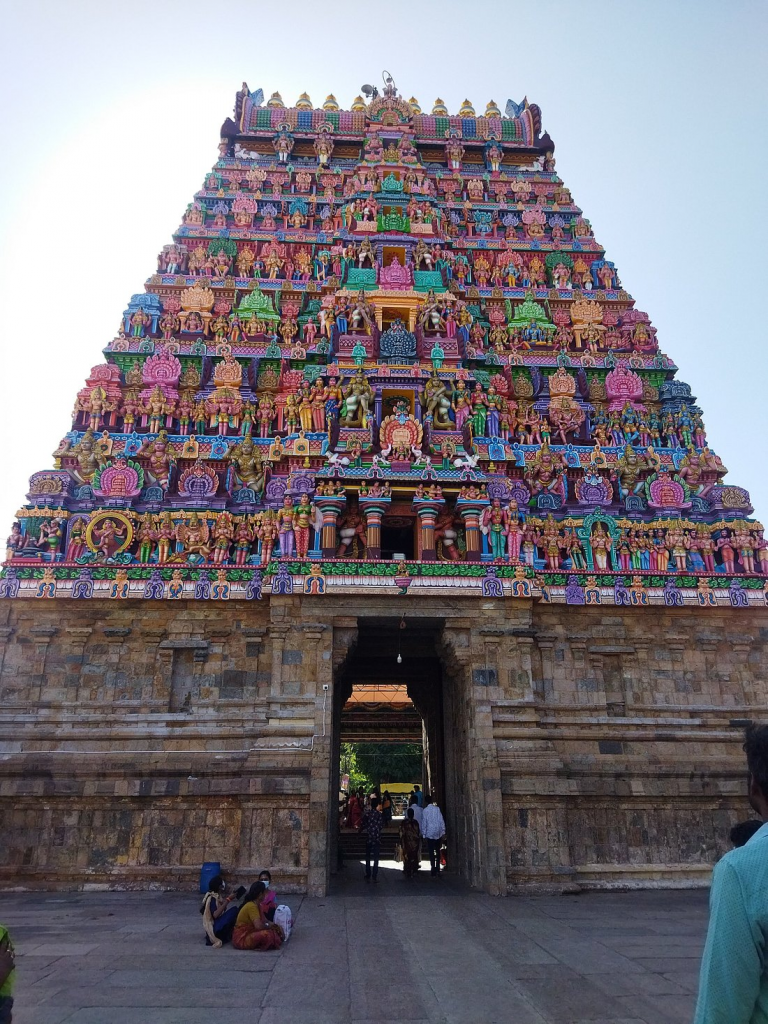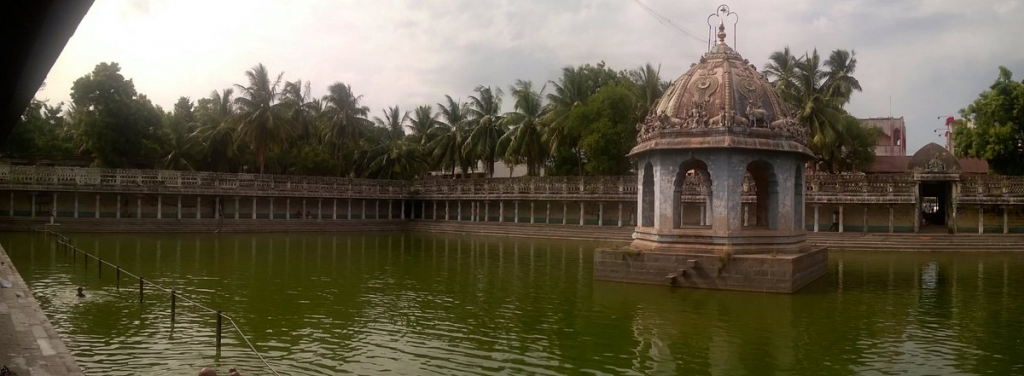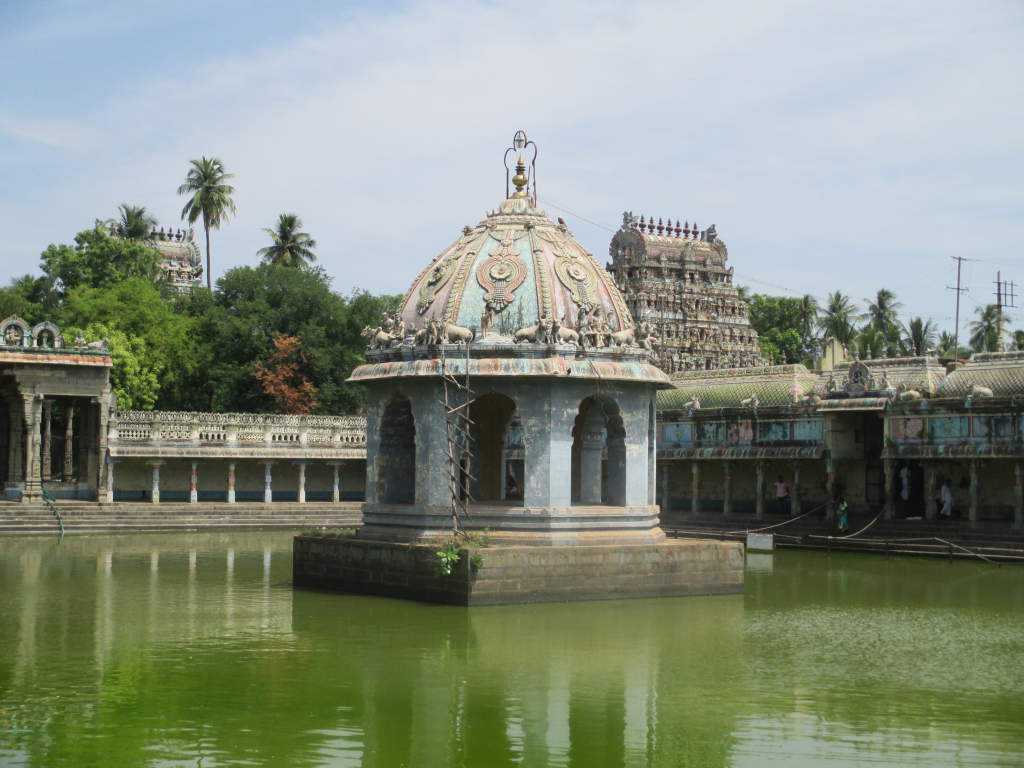Vaitheeswaran Koil Temple Official Website
Vaitheeswaran Koil is a Hindu temple dedicated to the Shiva, located in the Indian state of Tamil Nadu. Shiva is worshipped as Vaidyanathar or Vaitheeswaran meaning the “God of healing” and it is believed that prayers to Vaitheeswaran can cure diseases.

Vaitheeswaran is a Tamil derivative from Vaidya (Doctor) and Ishvara (God). The presiding deity is Sri Vaidyanathan, facing towards west whereas east side is the common one. He is the God of Healing.

It is one of the nine Navagraha (nine planets) temples and is associated with the planet Mars (Angaraka).

The village is also known for palm leaf astrology called Naadi astrology in Tamil. It is located 7 kilometers from Sirkazhi, 235 kilometers from Chennai, 27 km from Chidambaram, 110 km from Thanjavur and 16 km from Mayiladuthurai.

The holy waters of the Siddhamirtham tank within the temple complex contains nectar, and a holy dip is believed to cure all diseases.

The temple mentioned in the text is revered by the Tevaram hymns of 7th-century Saiva Nayanars, who were Tamil saint poets, and is also classified as a Paadal Petra Sthalam, a temple revered by the Nayanars.

Legend
During the Ramayana period, Rama, Lakshmana and Saptarishi have worshipped the deity in this place.
There is a pond at this temple called Jatayu Kundam (pot of Jatayu having holy ash of Vibhuti). One of the nine planets, Angaraka (Mars), suffered from leprosy and was cured by Vaidhyanathaswamy and from then on it is treated as one of the Navagraha Temples for planet Angaraka.
Parvati, the consort of Shiva, asked her son, Subramanya to appear with one face from his regular appearance of six faces. When he did so, she was pleased and presented him with Vel (a weapon) to slay the demons.
Subramanya overcame the Asura Surapadman (a demon) and in the war, his army was severely injured. Shiva came out as the healer Vaitheeswaran and cured the wounds.
As per another legend, Shiva came as Vaidya, a doctor, and cured the leprosy of a staunch devotee named Angahara.
Jatayu, Muruga and Surya were all believed to have worshipped Shiva here. Murugan obtained a Vel (trident) at this place and is called Selvamuthu Kumaran.
History
The temple has a rich history of contributions from various rulers of the region including Vikrama Chola, Vira Rajendra Pandya, Achuthappa Nayak (1560 – 1614 AD), and Maratha prince Thulaja.
There are five inscriptions in the temple, mainly belonging to the period of Kulothunga Chola I (1070-1120 CE). One inscription on the steps of the Subramanya shrine records the dimensions of the shutter of the sluice at Sattainathapuram.
Another on the right of the temple tank indicates that the tank, Nachiyar shrine, and its hall were completely renovated during the management of the temple by Muthukumara Swami Tambiran, a disciple of Sivagnanadesikar-Sambandar of the Dharmapuram Adheenam.
The inscriptions on the wall of the second precinct indicate that the courtyard of Thayalnayagi shrine, the sacred steps, and Tattisuri hall were built during Tamil year 4868 corresponding to 1689 CE.
On the floor near the accountant’s seat, there is a deed granted by Sankarabaragiri Rengopanditar by Ambalavanatambiran, an agent of the temple. The Easter gateway inscription indicates the gift of taxes from Manipallam in Tiruvalipparu.
The temple is currently maintained by Dharmapuram Adheenam, a Saivite mutt or monastic institution located in the town of Mayiladuthurai, India. As of 1987, there were a total of 27 Shiva temples under the control of the Adheenam.
Architecture
Vaitheeswarankoil is located 13 km (8.1 mi) from Mayavaram and 90 km from Thanjavur on the Thanjavur – Chidambaram highway.

The temple is located between Sirkali to Mayiladuthurai State Highway. Frequent bus services are operated by Tamil Nadu government. There is a Railway station which is located between Chennai to Mayiladuthurai railway road. Karaikal is the nearest proposal airport located around 40 kilometer from temple.

The temple is known for its beautiful architecture, including a five-tiered Gopuram (temple tower), two inner Gopurams, and spacious precincts.
The primary shrine is dedicated to Vaitheeswaran, represented by a Lingam in the innermost sanctum. The first precinct surrounding the sanctum houses a metal image of Subramanya, who is worshipped here as Muthukumara Swamy.

The sanctum of the temple houses metal images of Nataraja, Somaskanda, Angaraka, and stone sculptures of Durga, Dakshinamoorthy, Surya (Sun god), Jatayu, and Sampati.
The second precinct of the temple contains the shrine of Thaiyalnayaki facing south, which houses the image of Thiyalnayagi in a standing posture with medicinal oil to cure diseases. The large precinct also has a small shrine to Dhanvantari and a stone sculpture shrine of Angaraka. The southern gateway from this precinct leads to the temple tank and directly faces the Thaiyalnayaki shrine.
The Sthala Vriksha or temple tree is a margosa (Azadirachta indica or neem tree) believed to possess medicinal properties, located near the eastern gateway.
The eastern gateway also has the shrine of the Adi (original) temple which has a smaller replica of the main shrines. Inside the temple, there is a fine metal image of Gangavisarjanar. The shrine of Angaragan (Mars) is present near the Eastern gateway in the third precinct.
Worship and festivals
Devotees typically take a sacred bath in the temple tank prior to worshipping Vaitheeswaran at the temple. It is also a local belief that dissolving jaggery (Tamil: Vellam) in the waters can cure skin ailments. Another common practice is the tonsure ceremony, where children are shaved for the first time to promote proper growth.
Mavilakku ma, a form of worship, involves lighting lamps in rice cakes. Additionally, it is customary to place salt and pepper in front of the temple mast and a pot near the temple tank. Unlike other South Indian temples, where each shrine has its own priest, each priest in this temple associates with the devotees and performs worship on their behalf.
The holy soil rounded with ash (called Thiruchandu Urundai) is considered a medicinal treatment for various ailments. Sandalwood powder and saffron are also used as medicines. Silver-plated images of body parts are purchased and offered in the Hundi (vessel for offering) to heal specific ailments.
The Veeraraghavaswamy temple in Thiruvallur is regarded as the Vaishnavite equivalent of the Saivite Vaitheeswaran Kovil in terms of the presiding deity’s healing abilities.
The temple celebrates its annual Brahmotsavam festival during the Tamil calendar months of Pankuni and Thai (January-February), and the Karthigai festival during November is also celebrated with grandeur. Kantha Sashti, a festive occasion for Subramanya, is celebrated in the shrine of Muthukumaraswamy.
Navagraha temple
The temple is one of the nine Navagraha temples located in Tamil Nadu and is an integral part of the popular Navagraha pilgrimage in the state. It is home to the image of Angaraka (Mars), one of the nine planets in Hindu astrology.
As per Hindu customs, the planets are believed to have a significant impact on one’s life based on the time of their birth. Each planet moves from one star to another during a specific period and influences an individual’s fate accordingly. The Navagrahas are thought to provide both good and bad effects, and prayers are believed to mitigate the bad ones.
As with other Navagraha temples, devotees in this temple offer cloth, grains, flowers, and jewels specific to the deity of the planet. Lighting lamps is also a common practice.
According to local legend, Shiva was meditating on Mount Meru when a drop of sweat fell from his forehead and transformed into a beautiful child. The child was raised by Bhoomidevi and became a devout follower of Shiva. Impressed by his devotion, Shiva turned him into a planet. Angaraka is typically clothed in red based on his color.
Vaitheeswaran is believed to be the presiding deity of Angarakan in the temple. Sambathi, Jatayu, and Surya deva are also believed to have worshiped Vaitheeswaran at this temple.
Nadi astrology
Nadi astrology, also known as nāḍi jyotiṣa, is a type of Hindu astrology that is practiced in and around the temple. It is based on the belief that the past, present, and future lives of all humans were foreseen by Hindu sages in ancient times.
The Nadi texts are mainly written in Vatteluttu, which is an ancient Tamil script. There are different schools of thought regarding the authorship of these leaves. They are believed to have been written by a Tamil sage named Agathiyar, who is said to have had divine revelations.
Initially, these Nadi leaves were stored in the premises of the Tanjore Saraswati Mahal Library in Tamil Nadu. During the British rule, the British rulers became interested in the Nadi leaves related to herbs, medicine, and future predictions, but they left most of the leaves to their loyal subjects. Some of the leaves were destroyed, and the remaining were auctioned. Families of astrologers in Vaitheeswaran temple obtained and possessed these leaves, passing them down from one generation to the next.
Religious importance
The temple at Pullirukkuvelur is mentioned in the Tevaram hymns of saint poets Thirunavukkarasar and Sambandar from the 7th century. In their verses, the poets name the towns where they found the temple, and Pullirukkuvelur is identified as the temple they visited.
The hymns of the saints seem to acknowledge the mantras (sacred texts) as an invocation of Shiva. Thirunavukkarasar’s hymns compare Shiva to luminous objects such as a flame, a pearl, a diamond, and pure gold. He also expresses his regret at wasting many days without worshipping Shiva at this temple.
